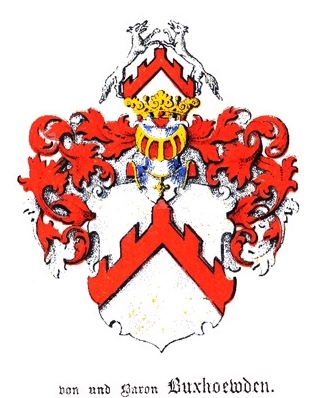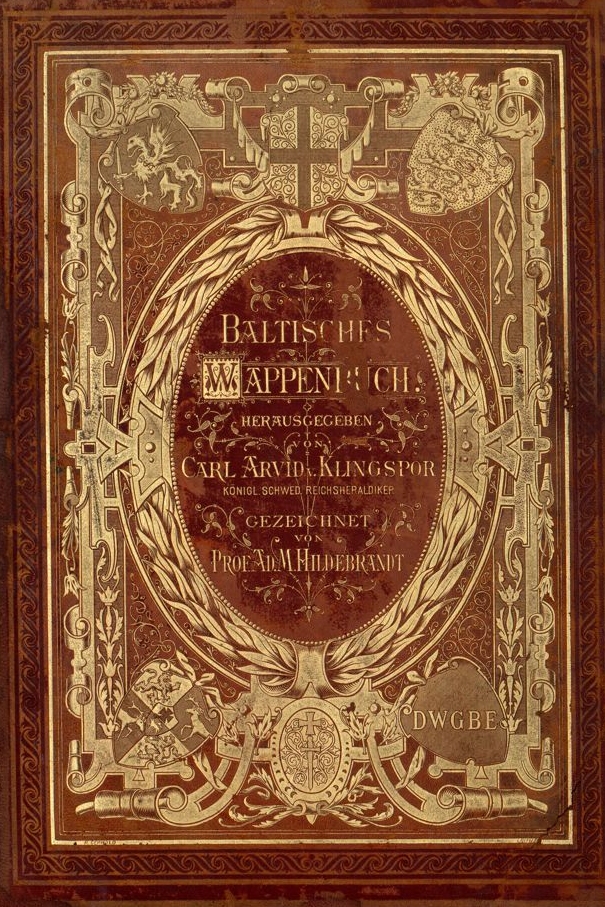|
Kõljala
Kõljala is a village in Saaremaa Parish, Saare County in western Estonia. Before the administrative reform in 2017, the village was in Pihtla Parish. Kõljala Manor Kõljala estate (german: Kölljall) traces its history to 1250, when it belonged to the Baltic German family von Buxhoeveden The House of Buxhoeveden was a Baltic German noble family of Lower Saxon origin in Estonia and Russian Empire, with roots tracing to Bexhövede. In Sweden, the family is considered part of the unintroduced nobility. Notable family members .... It has subsequently belonged to various Baltic noble families but was expropriated during the land reform following the declaration of independence of Estonia in 1919. From 1921 to 1955 it housed an agricultural school and after that a kolkhoz until Estonia re-gained its independence in 1991. The main building dates from the 18th century; the dominating portico was added during the 19th century. See also * List of palaces and manor hous ... [...More Info...] [...Related Items...] OR: [Wikipedia] [Google] [Baidu] |
List Of Palaces And Manor Houses In Estonia
This is the List of palaces and manor houses in Estonia. This list does not include castles, which are listed in a List of castles in Estonia, separate article. As there are at least 400 manor houses in Estonia, this list is incomplete. Palaces and manor houses in Estonia See also *Baltic nobility *Baltic Germans *List of palaces and manor houses in Latvia *List of palaces and manor houses in Lithuania *List of castles *List of castles in Estonia *List of castles in Latvia *List of castles in Lithuania *List of summer manors in Estonia Additional information References Sources * External links {{Commons category, Palaces in Estonia Estonian Manors PortalEstonian Manor AssociationManor Houses & Castles at VisitEstonia Lists of buildings and structures in Estonia, Palaces and manor houses Palaces in Estonia, Manor houses in Estonia, Lists of palaces by country, Estonia Lists of tourist attractions in Estonia, Palaces and manor houses ... [...More Info...] [...Related Items...] OR: [Wikipedia] [Google] [Baidu] |
Pihtla Parish
Pihtla Parish was a municipality in Saare County, Estonia. The municipality had a population of 1,400 (as of 1 January 2006) and covered an area of 228.11 km². During the administrative-territorial reform in 2017, all 12 municipalities on the island Saaremaa were merged into a single municipality – Saaremaa Parish. Villages Eiste - Ennu - Haeska - Hämmelepa - Iilaste - Ilpla - Kaali - Kailuka - Kangrusselja - Kiritu - Kõljala - Kõnnu - Kuusiku - Laheküla - Leina - Liiva - Liiva-Putla - Masa - Matsiranna - Metsaküla - Mustla - Nässuma - Pihtla - Püha - Rahniku - Räimaste - Rannaküla - Reeküla Reeküla is a village in Saaremaa Parish, Saare County in western Estonia. Before the administrative reform in 2017, the village was in Pihtla Parish Pihtla Parish was a municipality in Saare County, Estonia. The municipality had a populati ... - Reo - Sagariste - Salavere - Sandla - Sauaru - Saue-Putla - Sepa - Sutu - Suure-Rootsi ... [...More Info...] [...Related Items...] OR: [Wikipedia] [Google] [Baidu] |
Counties Of Estonia
Counties ( et, maakond, plural ') are the first-level administrative subdivisions of Estonia. Estonian territory is composed of 15 counties, including 13 on the mainland and 2 on islands. The government (') of each county is led by a ' (governor) who represents the national government (') at the regional level. Governors are appointed by the national government for a term of five years. Each county is further divided into municipalities of two types: urban municipalities (towns, ') and rural municipalities (parishes, '). The number and name of the counties were not affected. However, their borders were changed by the administrative reform at the municipal elections Sunday 15 October 2017, which brought the number of municipalities down from 213 to 79. List Population figures as of 1 January 2021. The sum total of the figures in the table is 42,644 km2, of which the land area is 42,388 km2, so that 256 km2 of water is included in the figures. History In the first ... [...More Info...] [...Related Items...] OR: [Wikipedia] [Google] [Baidu] |
Saare County
Saare County ( et, Saare maakond or ''Saaremaa''; la, Oesel; german: Ösel; sv, Ösel) is one of 15 counties of Estonia. It consists of Saaremaa, the largest island of Estonia, and several smaller islands near it, most notably Muhu, Ruhnu, Abruka and Vilsandi. The county borders Lääne County to the east, Hiiu County to the north, and Latvia to the south. In January 2013 Saare County had a population of 30,966, which was 2.4% of the population of Estonia. Municipalities The county is subdivided into municipalities. There are 3 rural municipalities ( et, vallad – parishes) in Saare County. Geography The largest islands of the county are Saaremaa, Muhu, Ruhnu, Abruka and Vilsandi. Arable land is and it has a mild maritime climate. The mean annual air temperature is and the mean annual precipitation is . Religious affiliations The main religious affiliations are Lutheran, Orthodox and Baptist, but only 33.6% consider themselves religious. Ancient Saare county (Oese ... [...More Info...] [...Related Items...] OR: [Wikipedia] [Google] [Baidu] |
Saaremaa Parish
Saaremaa Municipality, also known as Saaremaa Rural Municipality ( et, Saaremaa vald), is a municipality in Saare County in western Estonia. It is the largest municipality in Estonia by land area. The administrative centre of the municipality is its only town Kuressaare. It is one of three parishes comprising the county, along with Muhu and Ruhnu Parish. It was formed following the 2017 Estonian municipal reform on 21 October 2017 on the basis of all twelve former Saaremaa municipalities: Kuressaare town and Kihelkonna, Laimjala, Leisi, Lääne-Saare, Mustjala, Orissaare, Pihtla, Pöide, Salme, Torgu and Valjala Valjala is a small borough (') in Saare County, Estonia, on the island of Saaremaa Saaremaa is the largest island in Estonia, measuring . The main island of Saare County, it is located in the Baltic Sea, south of Hiiumaa island and west o ... parishes. Gallery File:Saare municipalities 1992–1999.png, 1992–1999 File:Saare municipalities 1999–2014.png, ... [...More Info...] [...Related Items...] OR: [Wikipedia] [Google] [Baidu] |
Eastern European Time
Eastern European Time (EET) is one of the names of UTC+02:00 time zone, 2 hours ahead of Coordinated Universal Time. The zone uses daylight saving time, so that it uses UTC+03:00 during the summer. A number of African countries use UTC+02:00 all year long, where it is called Central Africa Time (CAT), although Egypt and Libya also use the term ''Eastern European Time''. The most populous city in the Eastern European Time zone is Cairo, with the most populous EET city in Europe being Athens. Usage The following countries, parts of countries, and territories use Eastern European Time all year round: * Egypt, since 21 April 2015; used EEST ( UTC+02:00; UTC+03:00 with daylight saving time) from 1988–2010 and 16 May–26 September 2014. See also Egypt Standard Time. * Kaliningrad Oblast (Russia), since 26 October 2014; also used EET in years 1945 and 1991–2011. See also Kaliningrad Time. * Libya, since 27 October 2013; switched from Central European Time, which was u ... [...More Info...] [...Related Items...] OR: [Wikipedia] [Google] [Baidu] |
Eastern European Summer Time
Eastern European Summer Time (EEST) is one of the names of the UTC+03:00 time zone, which is 3 hours ahead of Coordinated Universal Time. It is used as a summer daylight saving time in some European and Middle Eastern countries, which makes it the same as Arabia Standard Time, East Africa Time, and Moscow Time. During the winter periods, Eastern European Time ( UTC+02:00) is used. Since 1996, European Summer Time has been applied from the last Sunday in March to the last Sunday in October. Previously, the rules were not uniform across the European Union. Usage The following countries and territories use Eastern European Summer Time during the summer: * Belarus, Moscow Summer Time in years 1981–89, regular EEST from 1991-2011 * Bulgaria, regular EEST since 1979 * Cyprus, regular EEST since 1979 ( Northern Cyprus stopped using EEST in September 2016, but returned to EEST in March 2018) * Estonia, Moscow Summer Time in years 1981–88, regular EEST since 1989 * Finland, regu ... [...More Info...] [...Related Items...] OR: [Wikipedia] [Google] [Baidu] |
Estonia
Estonia, formally the Republic of Estonia, is a country by the Baltic Sea in Northern Europe. It is bordered to the north by the Gulf of Finland across from Finland, to the west by the sea across from Sweden, to the south by Latvia, and to the east by Lake Peipus and Russia. The territory of Estonia consists of the mainland, the larger islands of Saaremaa and Hiiumaa, and over 2,200 other islands and islets on the eastern coast of the Baltic Sea, covering a total area of . The capital city Tallinn and Tartu are the two largest urban areas of the country. The Estonian language is the autochthonous and the official language of Estonia; it is the first language of the majority of its population, as well as the world's second most spoken Finnic language. The land of what is now modern Estonia has been inhabited by '' Homo sapiens'' since at least 9,000 BC. The medieval indigenous population of Estonia was one of the last " pagan" civilisations in Europe to adopt Ch ... [...More Info...] [...Related Items...] OR: [Wikipedia] [Google] [Baidu] |
Baltic Germans
Baltic Germans (german: Deutsch-Balten or , later ) were ethnic German inhabitants of the eastern shores of the Baltic Sea, in what today are Estonia and Latvia. Since their coerced resettlement in 1939, Baltic Germans have markedly declined as a geographically determined ethnic group. However, it is estimated that several thousand people with some form of (Baltic) German identity still reside in Latvia and Estonia. Since the Middle Ages, native German-speakers formed the majority of merchants and clergy, and the large majority of the local landowning nobility who effectively constituted a ruling class over indigenous Latvian and Estonian non-nobles. By the time a distinct Baltic German ethnic identity began emerging in the 19th century, the majority of self-identifying Baltic Germans were non-nobles belonging mostly to the urban and professional middle class. In the 12th and 13th centuries, Catholic German traders and crusaders (''see '') began settling in the eas ... [...More Info...] [...Related Items...] OR: [Wikipedia] [Google] [Baidu] |
Buxhoeveden Family
The House of Buxhoeveden was a Baltic German noble family of Lower Saxon origin in Estonia and Russian Empire, with roots tracing to Bexhövede. In Sweden, the family is considered part of the unintroduced nobility. Notable family members * Albert of Riga (1165–1229), third Bishop of Riga, founder of the Livonian Brothers of the Sword * Hermann of Dorpat (1163–1248), first Bishop of Dorpat * Reinhold von Buxhoeveden (est. 1480s-1557), was bishop of the Bishopric of Saare-Lääne from 1532 to 1541. * Friedrich Wilhelm von Buxhoevden (1750–1811), Russian Infantry General * Baroness Sophie Buxhoeveden (1883–1956), lady in waiting to Tsarina Alexandra of Russia * Arthur von Buxhoevden (1882–1964), Baltic-German military personnel (Colonel). Gallery File:Єпископ Альберт.gif, Albert of Riga on a Latvian coin. File:Buxhoevden.jpg, Friedrich Wilhelm von Buxhoeveden File:Sophie Buxhoeveden (right) and Anastasia Hendrikova.jpg, Sophie Buxhoeveden (right) w ... [...More Info...] [...Related Items...] OR: [Wikipedia] [Google] [Baidu] |
Baltic Nobility
Baltic German nobility was a privileged social class in the territories of today's Estonia and Latvia. It existed continuously since the Northern Crusades and the medieval foundation of Terra Mariana. Most of the nobility were Baltic Germans, but with the changing political landscape over the centuries, Polish, Swedish and Russian families also became part of the nobility, just as Baltic German families re-settled in locations such as the Swedish and Russian Empires. The nobility of Lithuania is for historical, social and ethnic reasons separated from the German-dominated nobility of Estonia and Latvia. History This nobility was a source of officers and other servants to Swedish kings in the 16th and particularly 17th centuries, when Couronian, Estonian, Livonian and the Oeselian lands belonged to them. Subsequently Russian Tsars used Baltic nobles in all parts of local and national government. Latvia in particular was noted for its followers of Bolshevism and the latter were ... [...More Info...] [...Related Items...] OR: [Wikipedia] [Google] [Baidu] |
Land Reform
Land reform is a form of agrarian reform involving the changing of laws, regulations, or customs regarding land ownership. Land reform may consist of a government-initiated or government-backed property redistribution, generally of agricultural land. Land reform can, therefore, refer to transfer of ownership from the more powerful to the less powerful, such as from a relatively small number of wealthy or noble owners with extensive land holdings (e.g., plantations, large ranches, or agribusiness plots) to individual ownership by those who work the land. Such transfers of ownership may be with or without compensation; compensation may vary from token amounts to the full value of the land. Land reform may also entail the transfer of land from individual ownership—even peasant ownership in smallholdings—to government-owned collective farms; it has also, in other times and places, referred to the exact opposite: division of government-owned collective farms into smallholdings. Th ... [...More Info...] [...Related Items...] OR: [Wikipedia] [Google] [Baidu] |




